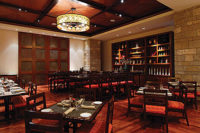
Photos courtesy of Boeing.
Products from PPG Industries’ aerospace business for the Boeing 787 Dreamliner jet will simplify maintenance and reduce costs for airlines while enhancing the flying experience for crews and passengers who travel aboard the world’s newest jetliner.
The Dreamliner flight deck features commercial aviation’s largest windshields, kept clear of fog and ice with gold and indium-tin oxide heating systems. Passengers can enjoy Alteos interactive window systems by PPG, commercial aviation’s first electrochromic window shades, which are powered by an interactive system that passengers control.
A selectively strippable coatings system provides simplified, environmentally responsible and less-costly maintenance. PPG Aerospace supplies the only complete coatings system qualified by Boeing for the 787.
In addition, the fuselage and fuel tank are sealed with lightweight, rapid-curing and environmentally responsible PRC-brand sealants by PPG Aerospace. A new secondary fuel and vapor barrier was developed to seal the exterior of the 787’s wing box.
“Our goal was to provide products as advanced as the Dreamliner jet itself that enhance the flying experience while providing practical advantages of being lightweight, low maintenance and environmentally responsible,” said Barry Gillespie, PPG Aerospace vice president. “PPG continues its long-term association with Boeing as a supplier of world-class transparencies, coatings and sealants, and we know airlines that fly the Dreamliner jet will benefit as well.”

Enhanced Passenger, Crew Experience with PPG Transparencies
The Alteos interactive window systems by PPG replace traditional pull-down opaque shades and enable passengers to select the amount of light transmitted through the window.“Electrochromic shades were the ideal solution for the Boeing 787’s large passenger-cabin windows,” said Mark Cancilla, PPG Aerospace global platform director for transparencies. “While Alteos interactive window systems make the flying experience more comfortable and fun for passengers, they afford operating efficiencies for airlines. They are lighter in weight than other shading systems and offer reduced maintenance because they are self-contained with no moving parts.”
The window systems use electrochromic technology by Gentex Corp., a leader in electrochromic devices for automotive applications.
The pilot and copilot of the Boeing 787 Dreamliner jet will sit behind the largest commercial-aviation windshields and side cockpit windows by PPG, providing a panoramic view that spans more than 13 feet across the cockpit.
“The windshields will have an outboard ply of strengthened glass by PPG and two stretched-acrylic plies,” Cancilla said. “Glass affords optical clarity, as well as chemical and abrasion resistance. Combining [glass] with acrylic enables us to produce a lightweight yet strong windshield. With this design, our windshields contributed to Boeing’s ability to meet their target weight.”
The electrically heated defog coatings on the 787 flight-deck windows are made with a gold thin film. In addition to providing window heat, the coating reflects a large amount of infrared energy, which helps to minimize heat in the cockpit.
The flight-deck windows are aerodynamically contoured to enhance the 787’s fuel efficiency. The structurally loaded windshields will carry aircraft pressurization loads, transferring the structural load back to the airframe, Cancilla said.

Environmentally Responsible Aerospace Coatings
Because of the 787’s composite airframe, PPG devised an improved paint system, said Brian Roberson, PPG Aerospace global platform director for coatings.“Boeing will use a PPG Aerospace selectively strippable system on the new 787 aircraft, consisting of our chromate-free Desoprime CA 7501 high-solids epoxy primer to protect the composite and metal surfaces; DeSoto F565-4010 chromate-free intermediate coating to facilitate topcoat removal for repainting; and Desothane CA 8000 high-solids polyurethane topcoats,” he said.
“When repainting is needed, a very mild, environmentally friendly chemical stripper can be used to remove the topcoats and intermediate coating,” Roberson said. “This eliminates the use of strong strippers and hand sanding that could damage the composite….It also eliminates the need for re-priming and use of surface preparation chemicals.”
Desothane CA 8000 high-solids topcoats contain more pigment than traditional coatings; thus, less material can be used to achieve needed coverage, and a lower percentage of solvent reduces volatile organic compound (VOC) emissions upon application. With a four-hour dry time, process cycle time is reduced, which allows planes to return to service sooner. The Desothane topcoat has the fastest dry time of any material qualified to Boeing’s material specification (BMS 10-126), Roberson said.
Expected time savings over a normal strip-and-repaint system is about two and a half days. “As a result, airlines will reduce aircraft refinish downtime by about 40% by eliminating base primer application and hazardous materials collection and disposal,” Roberson said.
High-Performance, Lightweight Sealants
PRC sealants provide performance characteristics designed for the 787’s composite airframe, while offering weight savings for enhanced fuel efficiency.“The 787 uses a variety of PPG Aerospace ‘Generation III’ lightweight sealants, which offer 20-30% weight reduction over their predecessors,” said John Sands, PPG Aerospace global platform director for sealants. “On a wide-body aircraft such as the 787, these reductions take hundreds of pounds off the airframe, contributing to fuel savings and extending range.”
The 787 is the Boeing launch platform for PR-1772 chromate-free lightweight fuselage sealant, affording as much as a 30% weight savings per unit volume over traditional sealants. PR-2001 fuel-tank sealant is qualified for moldline exterior application because it is fast-curing, offers low shrinkage and features a service range of up to 320°F.
About PPG Aerospace
PPG Industries’ vision is to continue to be the world’s leading coatings and specialty products company. Founded in 1883, the company serves customers in industrial, transportation, consumer products, and construction markets and aftermarkets. With headquarters in Pittsburgh, PPG operates in more than 60 countries around the globe. Sales in 2009 were $12.2 billion.About PPG
Pittsburgh-based PPG is a global supplier of coatings, optical products, specialty materials, chemicals, glass and fiberglass. The company has more than 140 manufacturing facilities and equity affiliates, and operates in more than 60 countries. Sales in 2009 were $12.2 billion.For more information, visit www.ppg.com.
Alteos is a trademark of PPG Industries.
Desoprime, Desothane, DeSoto and PRC are trademarks of PRC-DeSoto International.
Dreamliner is a trademark of Boeing.

